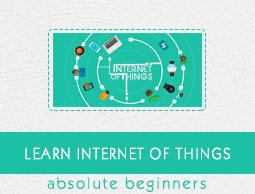Internet of Things - Common Uses
IoT has applications across all industries and markets. It spans user groups from those who want to reduce energy use in their home to large organizations who want to streamline their operations. It proves not just useful, but nearly critical in many industries as technology advances and we move towards the advanced automation imagined in the distant future.
Engineering, Industry, and Infrastructure
Applications of IoT in these areas include improving production, marketing, service delivery, and safety. IoT provides a strong means of monitoring various processes; and real transparency creates greater visibility for improvement opportunities.
The deep level of control afforded by IoT allows rapid and more action on those opportunities, which include events like obvious customer needs, nonconforming product, malfunctions in equipment, problems in the distribution network, and more.
Example
Joan runs a manufacturing facility that makes shields for manufacturing equipment. When regulations change for the composition and function of the shields, the new appropriate requirements are automatically programmed in production robotics, and engineers are alerted about their approval of the changes.
Government and Safety
IoT applied to government and safety allows improved law enforcement, defense, city planning, and economic management. The technology fills in the current gaps, corrects many current flaws, and expands the reach of these efforts. For example, IoT can help city planners have a clearer view of the impact of their design, and governments have a better idea of the local economy.
Example
Joan lives in a small city. She’s heard about a recent spike in crime in her area, and worries about coming home late at night.
Local law enforcement has been alerted about the new “hot” zone through system flags, and they’ve increases their presence. Area monitoring devices have detected suspicious behavior, and law enforcement has investigated these leads to prevent crimes.
Home and Office
In our daily lives, IoT provides a personalized experience from the home to the office to the organizations we frequently do business with. This improves our overall satisfaction, enhances productivity, and improves our health and safety. For example, IoT can help us customize our office space to optimize our work.
Example
Joan works in advertising. She enters her office, and it recognizes her face. It adjusts the lighting and temperature to her preference. It turns on her devices and opens applications to her last working points.
Her office door detected and recognized a colleague visiting her office multiple times before she arrived. Joan’s system opens this visitor’s messages automatically.
Health and Medicine
IoT pushes us towards our imagined future of medicine which exploits a highly integrated network of sophisticated medical devices. Today, IoT can dramatically enhance medical research, devices, care, and emergency care. The integration of all elements provides more accuracy, more attention to detail, faster reactions to events, and constant improvement while reducing the typical overhead of medical research and organizations.
Example
Joan is a nurse in an emergency room. A call has come in for a man wounded in an altercation. The system recognized the patient and pulls his records. On the scene, paramedic equipment captures critical information automatically sent to the receiving parties at the hospital. The system analyzes the new data and current records to deliver a guiding solution. The status of the patient is updated every second in the system during his transport. The system prompts Joan to approve system actions for medicine distribution and medical equipment preparation.


